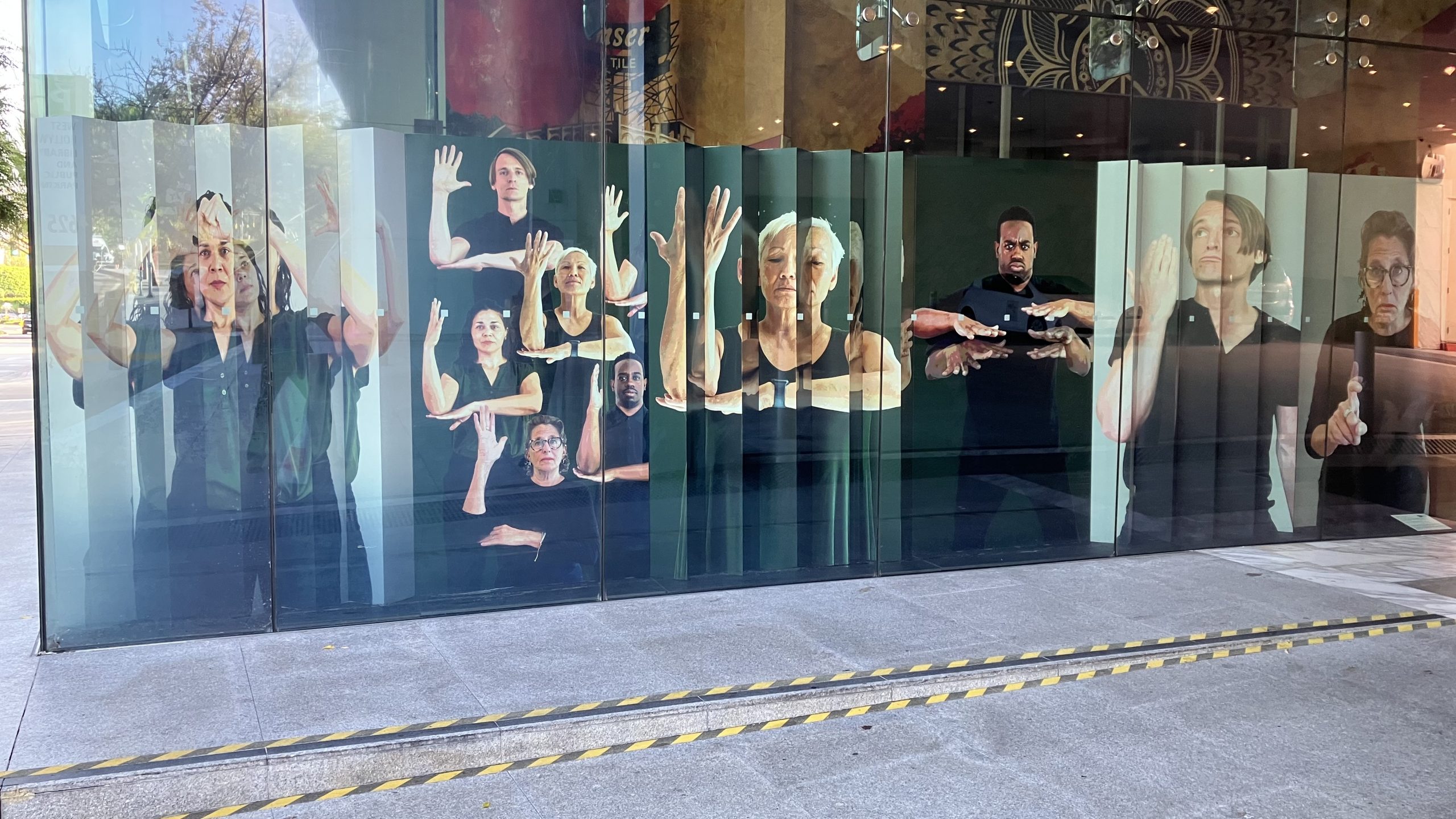
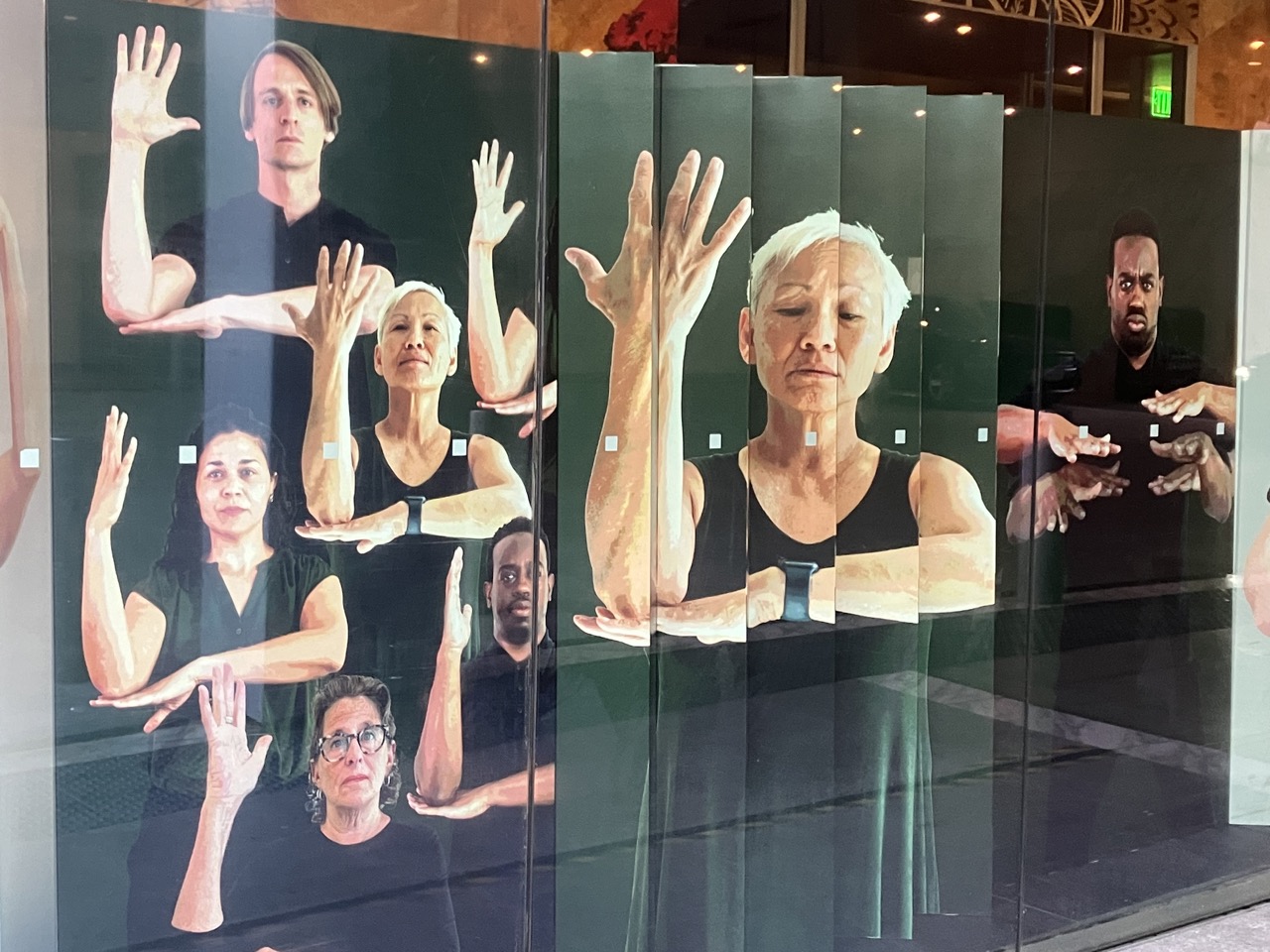
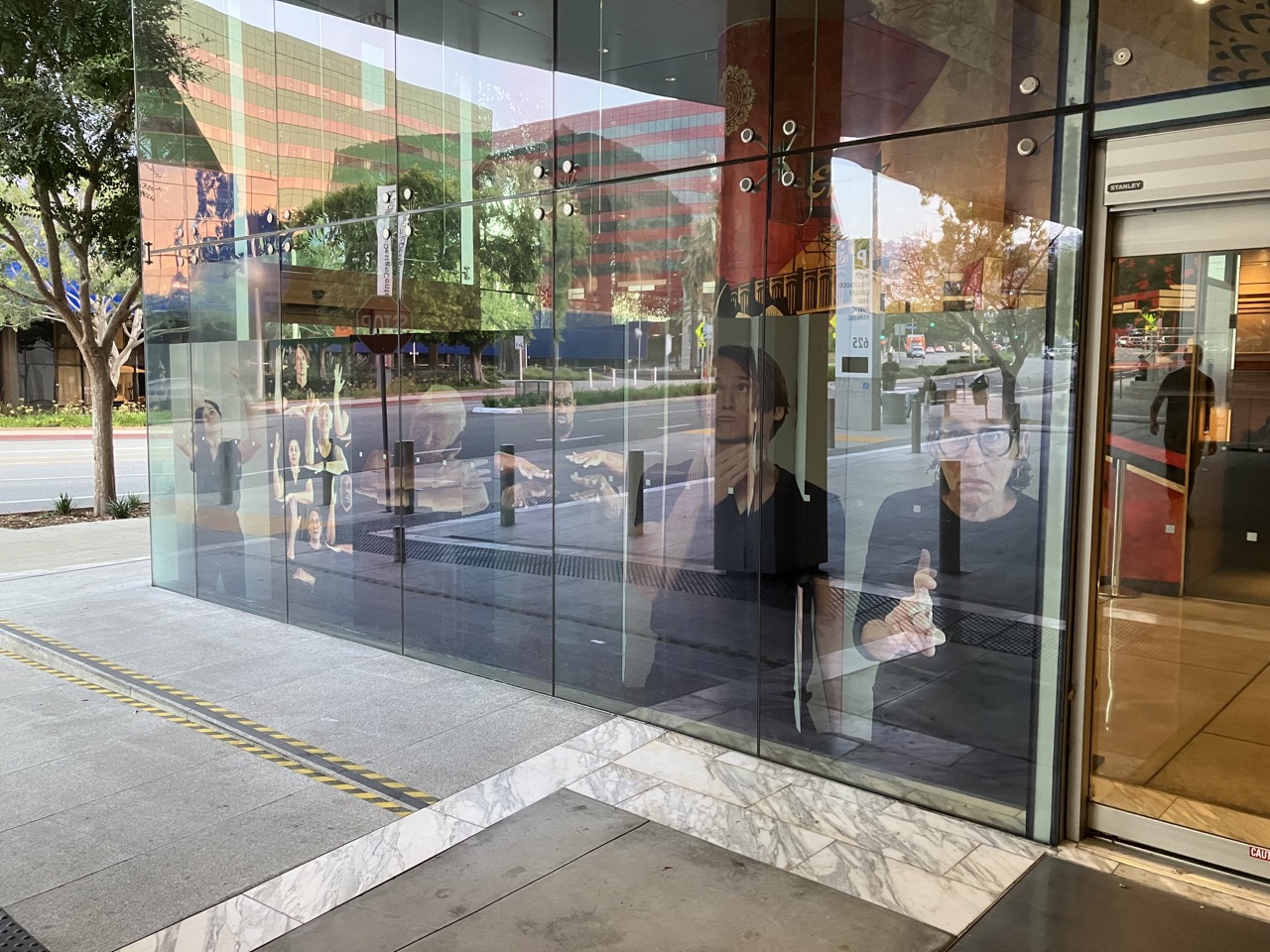
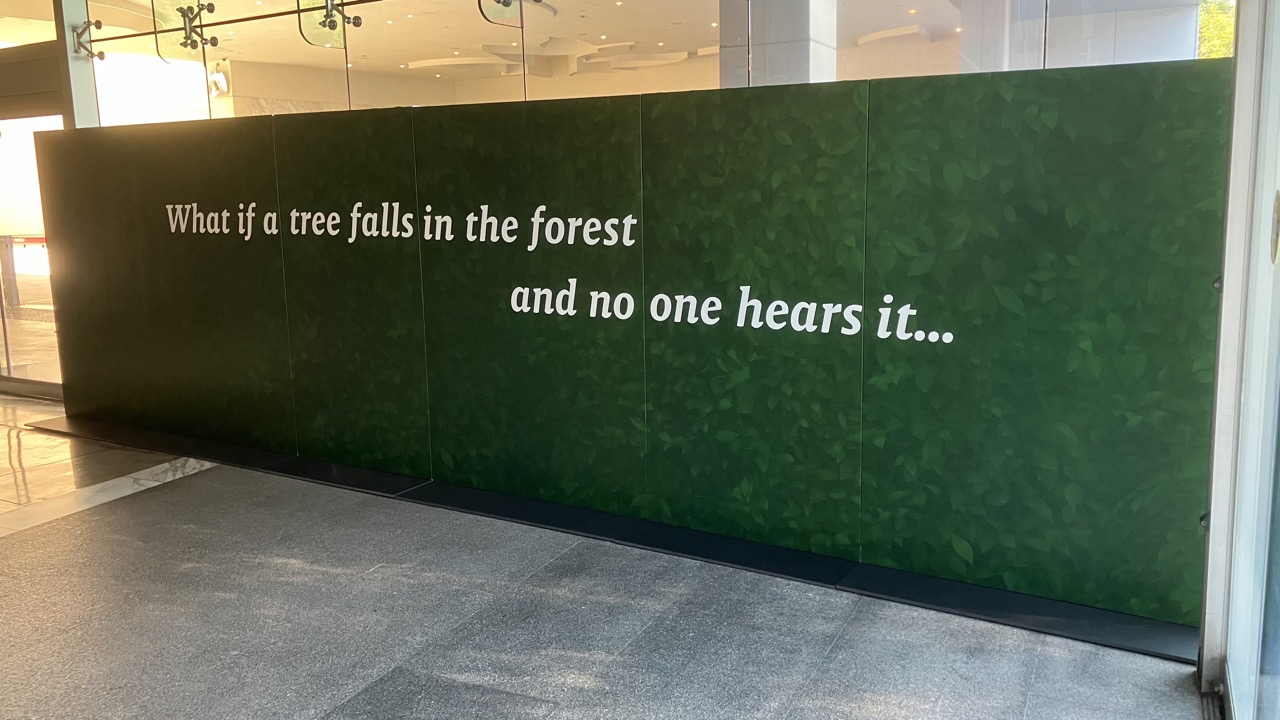
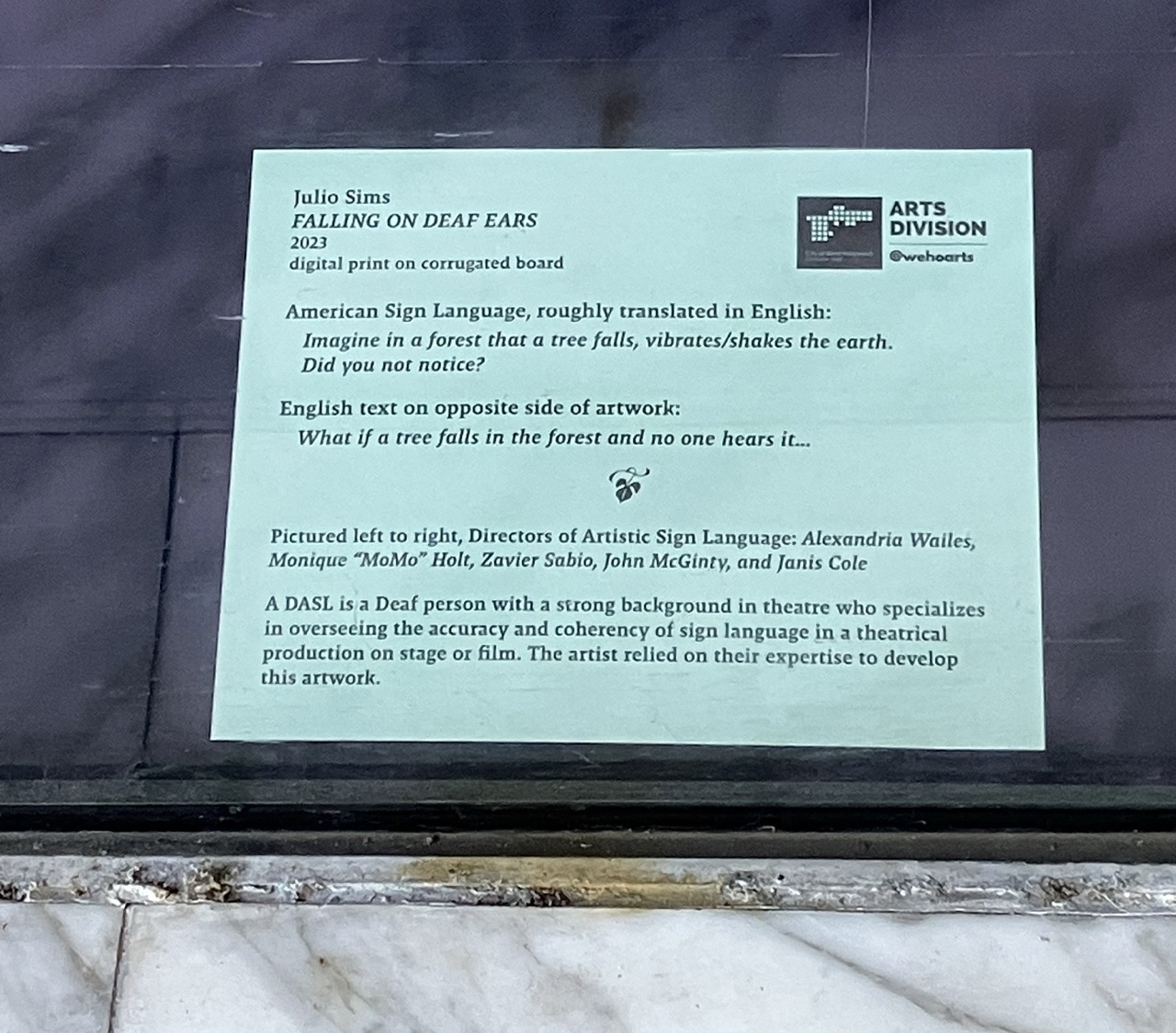
Client: City of West Hollywood
Location: West Hollywood, CA, United States
Completion date: 2023
Project Team
Artist
Julio Sims
Fabrication/Installation
Primary Color
Public Art Administration
Arts Division, City of West Hollywood
Overview
American Sign Language, roughly translated in English: “Imagine in a forest that a tree falls, vibrates/shakes the earth. Did you not notice?”
English text on opposite side of artwork: “What if a tree falls in the forest and no one hears it…”
Pictured left to right, Directors of Artistic Sign Language: Alexandria Wailes, Monique “MoMo” Holt, Zavier Sabio, John McGinty, and Janis Cole
The artwork was exhibited at West Hollywood’s City Council Chambers Lobby from September 11, 2023 to January 10, 2024, as part of the City of West Hollywood’s “Art On The Outside” program of temporary art exhibitions.
(6′ x 22′ x 2′ / Digitally printed corrugated board)
Goals
The artwork’s inventive use of ASL and hearing/deaf collaboration is a noteworthy example of cross-cultural creative exchange. The artwork is the artist’s reflection on the trauma and grief we've experienced over the last few years; personal and collective, local and global through the pandemic, struggles for democracy, climate change, and justice inequality. Through the visual poetry of ASL, it is a reminder or call to ‘pause and witness’… and to reconsider the rich complexity of how we communicate and what is understood. The title, Falling On Deaf Ears, utilizes ASL to re-examine and transform our use of the common derogatory expression.
Process
The five ASL performers are all Directors of Artistic Sign Language. A DASL is a Deaf person with a strong background in theater who specializes in overseeing the accuracy and coherency of sign language in a theatrical production on stage or film. The artist relied on their expertise to develop this artwork. The collaborative process over many months to refine the ASL message is at the heart of this project. Beyond a literal translation of the familiar English phrase to ASL, it was imperative to provide a message that was linguistically clear and actually relevant to the Deaf community.
The artist who is neither deaf nor conversant in ASL used a wide array of methods to communicate with his collaborators both online and in person: email, video conferencing, text chat, audio/text translation app, FaceTime, text-to-voice phone relay, and sign language interpreter.
In addition to hand gestures, sign language relies on a combination of body position, facial expression and movement to convey meaning. The artist/DASL team developed several visual techniques to accurately, yet poetically distill the ASL message: dual pleated surfaces creating a simple animation, group of figures performing different stages of one sign, and superimposed limbs to convey repetitive or complex movement.
Additional Information
Despite the artwork’s enormous scale with larger-than-life figures and 24/7 public accessibility, the certainty of its communication is intentionally undermined and complicated. The pleated surfaces prevent the complete set of images to be seen all at once, one’s mirror image and surroundings are reflected in the glass windows, and questions arise from the differences between the ASL imagery and approximate English text translation. Furthermore, the ‘tree’ which ‘falls’ becomes both literal and metaphoric, when embodied by human performers.